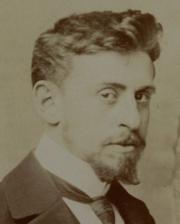Born near Fontainebleau in 1878, Paul Jouve is the son of painter and ceramist Auguste Jouve.
See more
Born near Fontainebleau in 1878, Paul Jouve is the son of painter and ceramist Auguste Jouve.
The young Jouve grew up in Paris, between his father's workshop and the walks at the Jardin des Plantes and at the Natural History Museum, where he admires the wild animals, especially big cats, that he starts to draw at a very young age. .
Joined at the School of Decorative Arts, and then at the École des Beaux-Arts, his training is more like that of a self-taught, guided by his father. Paul Jouve prefers to draw alone, on the spot, in front of the subject. He studies poses and movements of felines, seeking to translate their extraordinary flexibility. From the end of the 19th century, he exhibited in Salons as the Salon of the Society of French Artists or the Salon of the National Society of Fine Arts, and became a member of the Society of Decorative Artists. He then meets the lacquerers Jean Dunand and Gaston Switzerland, who will become a close friend, the sculptor Bugatti, Marcel Bing (son of the merchant and gallerist Samuel Bing), and regularly takes part in the exhibitions, presenting his animal drawings in charcoal and his bronze sculptures , well received by critics.
Jouve travels a lot and the discovery of many countries - in North Africa and in particular Algeria, Greece, Indochina, Egypt - influences his work, inspiring him scenes and Eastern landscapes appreciated.
Already at the peak of his art before 1914, the postwar years saw his consecration. His illustrious talents earned him important commissions and he provided many boards, for example, for Kipling's The Book of the Jungle, The Book of Beasts called Wild Demaison or for Paradis Terres de Colette.
Paul Jouve died in 1973.

